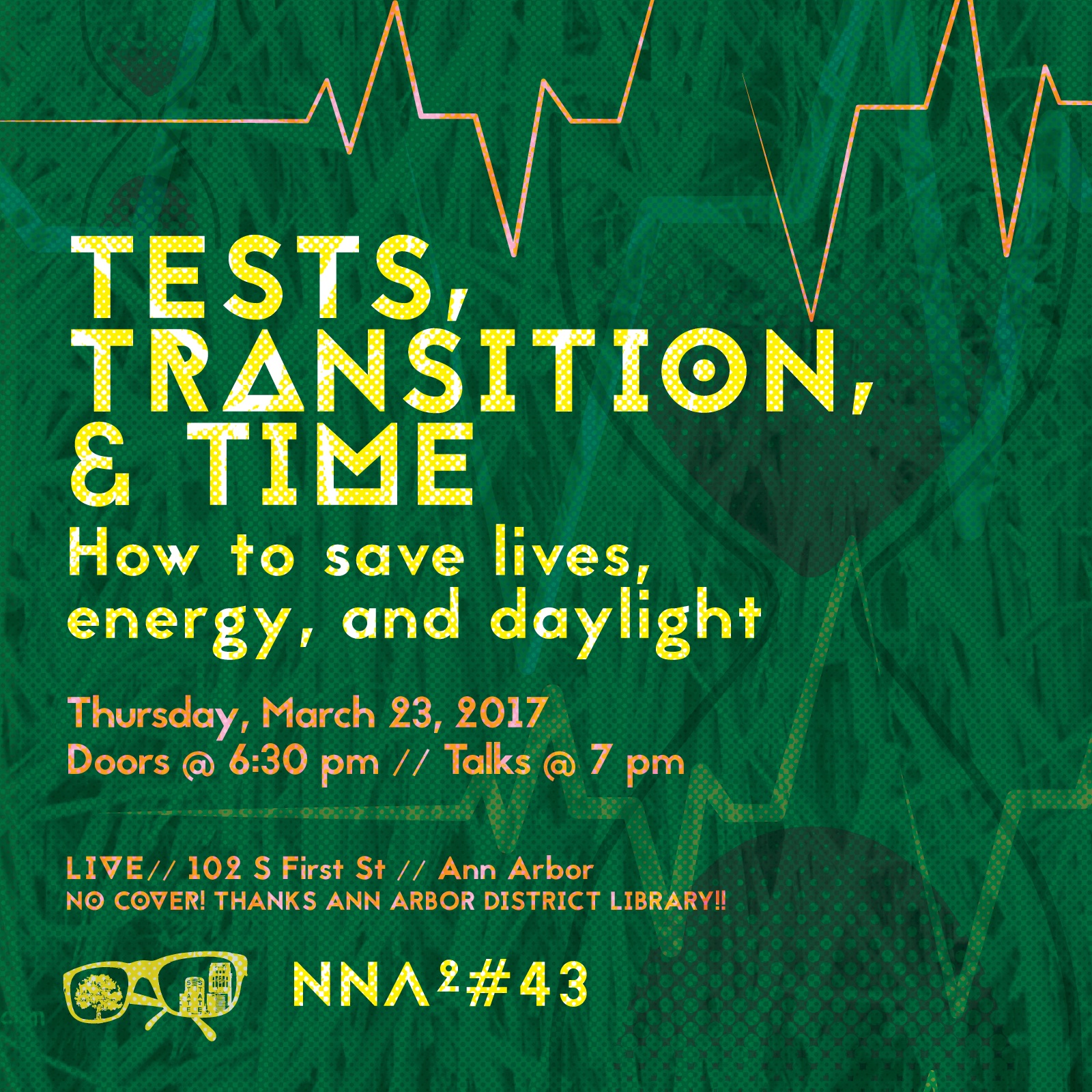Ah, Nerd Nite! A time for nerds of all kinds to come together and talk of many things.This time around, we’re talking about what medical diagnostic tests can (and cannot) tell us, sustainable living in a solar-powered house made of straw, and how time is dumb – we’re looking at you, Daylight Saving Time!
Testing, testing! NNA2 alum and PhD/MD student Carl Engelke is here to talk about medical testing – the how, the why, and the reality of what some of these common screening exams can and can’t tell us. Science!
Hay is for houses! Professor, designer, and farmer Joe Trumpey built his house out of straw and field rocks and determination and ingenuity, and he’s here to tell you the practical side of transitioning to an off-the-grid, sustainable lifestyle.
(H)our third speaker is engineer Matt Carpenter – he’ll take a moment to explain the stories behind leap years and the agony and ecstasy that is falling back and springing forward with Daylight Saving Time.
So text the friend you’ve been meaning to hang out with and come see us for Tests, Transition, & Time: How to save lives, energy, and daylight at LIVE on First St, Thursday, 3/23, doors at 6:30 pm.
Medical tests: a sensitive and specific subject
Navigating the increasingly complex world of medical tests can be difficult, even for those who have spent years training in health care. When should certain tests be ordered? How can they be reasonably interpreted? What makes a test good or bad? The extent to which there is gray area in this field has been hinted at by recent articles in popular media about controversies surrounding cancer screening tests like the mammogram or prostate-specific antigen (PSA). Together, we will explore some fundamental principals of evidence-based medicine in order to begin answering these questions.
About Carl: Carl had many, varied interests throughout the years, and he still sometimes wonders what he wants to do when (if) he grows up. He studied trumpet performance in college at Indiana University and the Royal Academy of Music in London. Currently, as a completely logical next step, he is an MD/PhD student at the University of Michigan Medical School, where he studies how next-generation interrogation of the molecular landscape of prostate cancer can lead to better diagnostic and prognostic tools.
I have practiced doing sustainable stuff for more than 25 years – and am still practicing to get it right. We live off the grid in a strawbale house in Grass Lake and grow about 60% of our food. Life off the grid in Michigan can be challenging during our short, cloud covered winter days. I will share some technical and behavioral details of life off the grid – where it is necessary to track your use of electrons each and every day.
About Joe: Joe Trumpey is a Farmer, Transition Designer, Science Illustrator and Educator. As an Associate Professor at the University of Michigan, he holds appointments at the Stamps School of Art & Design, Program in the Environment, and School of Natural Resources and Environment. He directs the University’s Sustainable Living Experience. As a freelance illustrator, he founded and directs, Michigan Science Art, one of North America’s largest groups of science illustrators. He is the recipient of the University of Michigan’s Undergraduate Teaching Award and has been a TedX Speaker. He and his family live off the grid in a strawbale home he designed and built in Grass Lake, Michigan. There they farm a variety of heritage breed livestock and grow more than half their food. He was named the 2015 Homesteader of the year by Mother Earth News Magazine.
Many of us live our lives in the moment. Some live theirs day by day. Regardless, we all live within the constraints of time. We understand days and years are caused by the earth spinning on its axis and orbiting around the sun. But what about seconds, hours, and months. And what the heck is a leap year, anyway!? … “It’s something unpredictable, but in the end it’s right. I hope you had the time of your life.” – Billy Joe
About Matt: Matt is a Michigan Engineering alum who, just like Jim Harbaugh, spent a few years working on the West Coast before giving in to the irresistible pull to return to Ann Arbor. He is now left wondering where all the time went. And for that matter, what time is.



